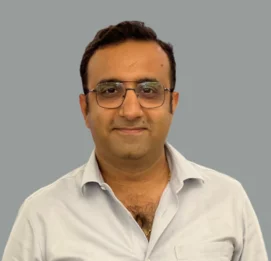In the ever-evolving landscape of cybersecurity, regularly updating software and applying security patches is a fundamental practice for safeguarding your company from phishing attacks. By addressing software vulnerabilities and fixing known security flaws, you fortify your systems against unauthorized access and potential data breaches. In this blog post, we will explore the significance of software updates and security patches, emphasizing their role in protecting your organization from phishing attempts. By implementing a proactive approach to software maintenance, you can bolster your defenses and mitigate the risks associated with outdated software.
Stay Protected Against Exploited Vulnerabilities:
Software vulnerabilities are a constant target for cybercriminals seeking entry points into your systems. These vulnerabilities are often discovered by security researchers and promptly exploited by attackers. By keeping your software up to date, you ensure that you have the latest security patches, which effectively address these known vulnerabilities. Regular updates significantly reduce the risk of successful attacks based on exploiting these vulnerabilities, protecting your systems and sensitive information.
Patching Known Security Flaws:
Software vendors regularly release security patches to rectify known vulnerabilities and strengthen the overall security of their products. These patches address specific security flaws that could be exploited by attackers. By promptly applying these patches, you close potential security gaps and safeguard your systems from known attack vectors. Neglecting to apply security patches leaves your organization susceptible to threats that could have been easily mitigated with up-to-date software.
Click Here:- Strengthening Email Authentication: Implementing SPF and DKIM to Combat Phishing Attacks
Protect Against Malware Infections:
Outdated software, particularly operating systems, web browsers, and productivity applications, is a prime target for malware infections. Attackers frequently exploit vulnerabilities in these programs to deliver malware through infected websites or malicious email attachments. Regularly updating your software ensures that you have the latest security measures in place to protect against these evolving malware threats. By promptly installing updates, you fortify your defenses against malicious actors attempting to exploit outdated software vulnerabilities and compromise your systems.
Enhance System Stability and Performance:
Software updates not only address security vulnerabilities but also include bug fixes, performance enhancements, and stability improvements. By keeping your software up to date, you benefit from a more stable and reliable computing environment. This reduces the risk of system crashes, improves productivity, and ensures uninterrupted business operations. Outdated software can lead to compatibility issues, performance bottlenecks, and system instability, compromising the overall efficiency and effectiveness of your organization.
Update All Software Components:
Remember that software updates encompass more than just operating systems and major applications. It is essential to update all software components, including plugins, extensions, firmware, and drivers. These components can also contain vulnerabilities that must be addressed to maintain a secure computing environment. Overlooking any software component increases the potential attack surface and weakens your overall security posture. Stay vigilant and ensure that all software components are regularly updated to eliminate potential vulnerabilities and reduce the risk of exploitation.
Utilize Automatic Updates:
Taking advantage of automatic update features provided by software vendors is highly recommended. Automatic updates ensure that you receive the latest security patches without relying on manual checks or user intervention. This eliminates the possibility of human error or oversight in updating software regularly. By enabling automatic updates, you streamline the process, enhance efficiency, and minimize the window of vulnerability. However, it is crucial to monitor and validate the updates to ensure their successful deployment and compatibility with your systems.
Implement a Patch Management Strategy:
To effectively manage software updates and security patches, it is essential to establish a comprehensive patch management strategy. This strategy should encompass several key elements:
- Centralized Monitoring: Implement tools or systems that monitor software versions and notify administrators of available updates and patches. This centralized approach streamlines the update process and ensures consistent tracking of software vulnerabilities.
- Testing and Validation: Before applying updates and patches to production systems, conduct thorough testing in a controlled environment to ensure compatibility and minimize the risk of any adverse effects. Testing helps identify and address potential issues before deploying updates to live systems.
- Prioritization: Prioritize critical and high-risk systems when applying patches. Focus on systems that are exposed to the internet, handle sensitive data, or have a higher likelihood of being targeted by attackers. By prioritizing updates, you allocate resources effectively and mitigate the most significant risks promptly.
- Timely Deployment: Develop a schedule for applying updates promptly. Balance the need for quick deployment to mitigate vulnerabilities with the need to minimize disruption to ongoing operations. Timely deployment is crucial to reducing the exposure window for potential attacks.User Education and Awareness:
Educating employees about the importance of software updates and security patches is vital. Emphasize the role they play in maintaining a secure work environment and protecting sensitive data. Encourage employees to promptly install updates on their workstations and report any suspicious or unusual software behavior to the IT department. By fostering a culture of cybersecurity awareness, you empower your employees to be active participants in maintaining a robust defense against phishing attacks and other security breaches.
Conclusion:
Regularly updating software and applying security patches is an integral part of a comprehensive cybersecurity strategy. By staying proactive and vigilant in keeping your software up to date, you significantly reduce the risk of falling victim to phishing attacks and other security breaches. The importance of software updates extends beyond addressing security vulnerabilities; it also enhances system stability, performance, and protection against malware infections. By implementing a robust patch management strategy and educating your employees, you create a stronger defense against evolving threats and ensure the ongoing security of your organization. Stay ahead of potential risks by prioritizing software updates and fortifying your defenses against phishing attacks.






























